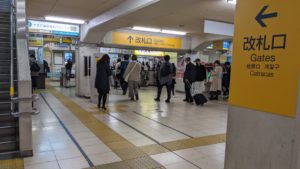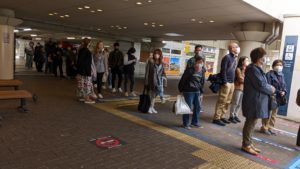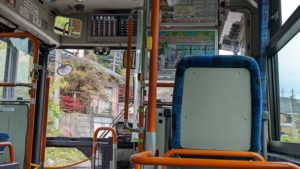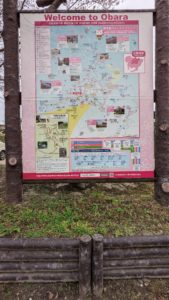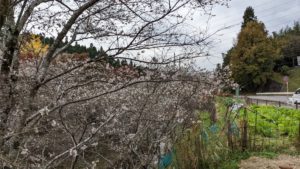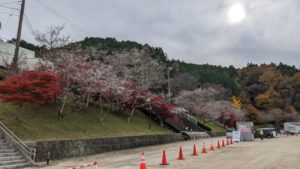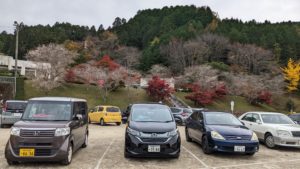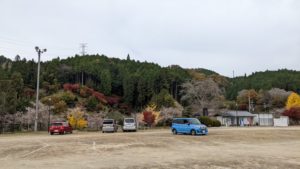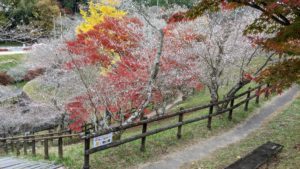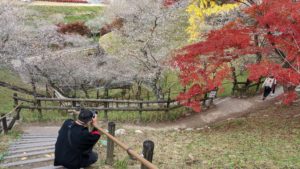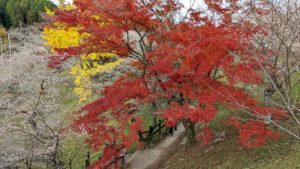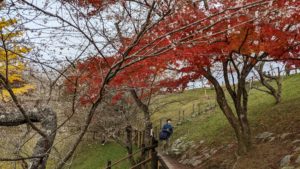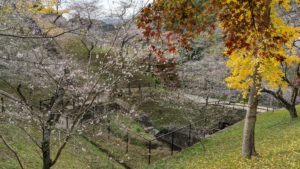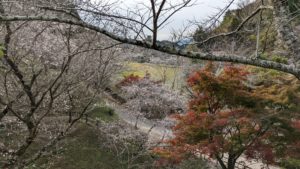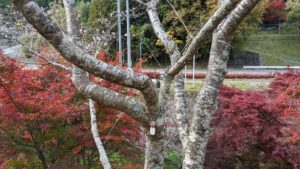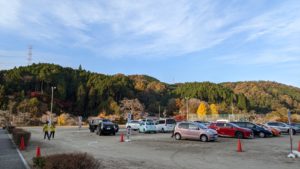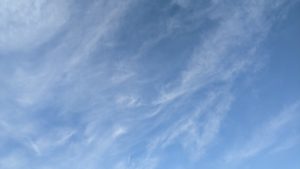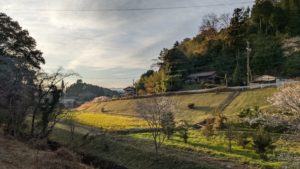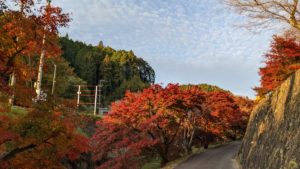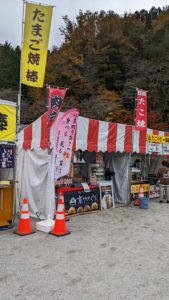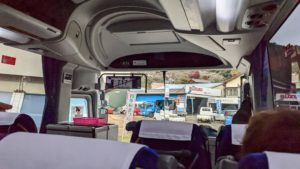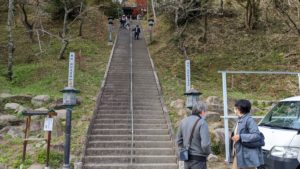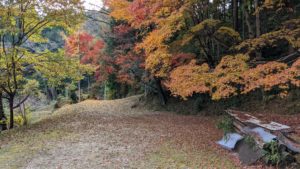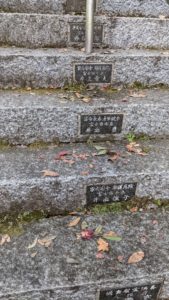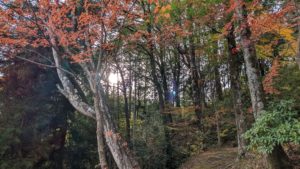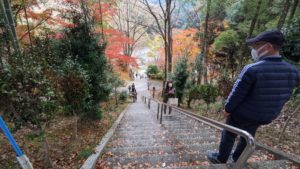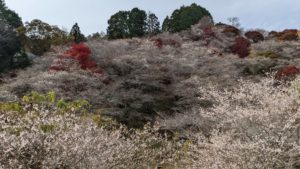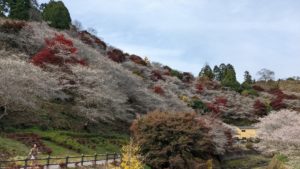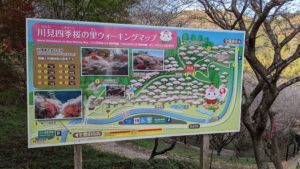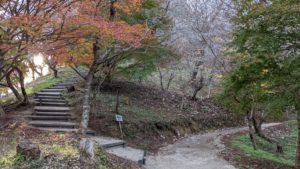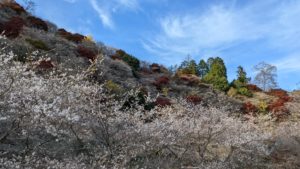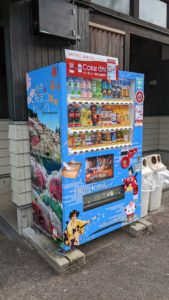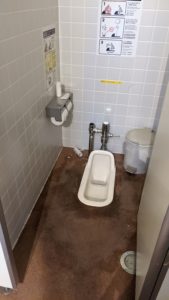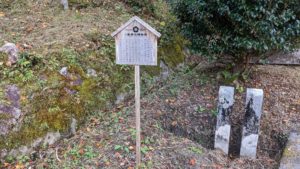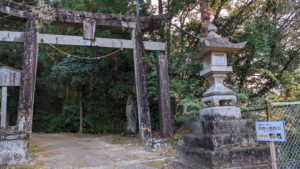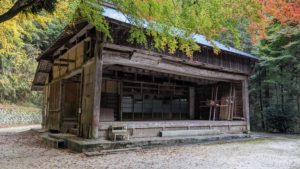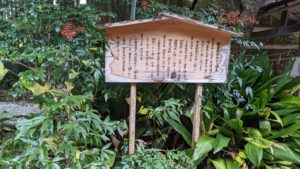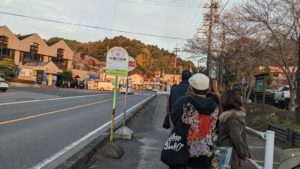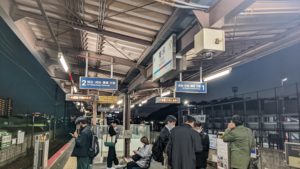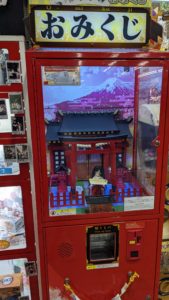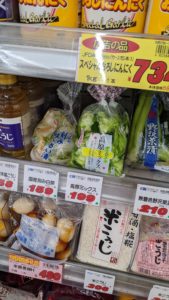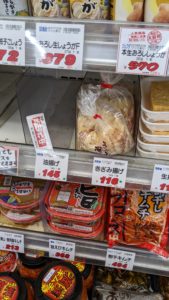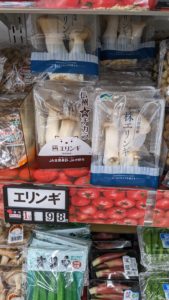Kami Watch Over Me Series - Table of Contents
| Entry | Notable Places/Events | Start of Day | End of Day |
|---|---|---|---|
| Day 0 – Thursday, Oct 20 2022 to Friday, Oct 21 2022 | Flight from Edmonton to Tokyo | Edmonton | Tokyo |
| Day 1 – Saturday, Oct 22 2022 | Saitama, Ikebukuro | Tokyo | Tokyo |
| Day 2 – Sunday, Oct 23 2022 | Autumn Reitaisai 9, Shinjuku | Tokyo | Tokyo |
| Day 3 – Monday, Oct 24 2022 | Akihabara | Tokyo | Tokyo |
| Day 4 – Tuesday, Oct 25 2022 | Hakone | Tokyo | Hakone |
| Day 5 – Wednesday, Oct 26 2022 | Kamakura, Enoshima Shrine | Hakone | Kamakura |
| Day 6 – Thursday, Oct 27 2022 | Hanno | Kamakura | Hanno |
| Day 7 – Friday, Oct 28 2022 | Shinkoiwa | Hanno | Tokyo |
| Day 8 – Saturday, Oct 29 2022 | Akihabara, Matsudo City | Tokyo | Tokyo |
| Day 9 – Sunday, Oct 30 2022 | M3-50, Moto-Yawata | Tokyo | Tokyo |
| Day 10 – Monday, Oct 31 2022 | Akasaka, Shimo-Kitazawa, Shibuya Halloween | Tokyo | Tokyo |
| Day 11 – Tuesday, Nov 01 2022 | Shinjuku, Sophia University | Tokyo | Tokyo |
| Day 12 – Wednesday, Nov 02 2022 | Sophia University, Kabukicho | Tokyo | Tokyo |
| Day 13 – Thursday, Nov 03 2022 | Shinjuku Loft | Tokyo | Tokyo |
| Day 14 – Friday, Nov 04 2022 | Shinjuku, Hanazono/Asakusa Tori no Ichi, Sensoji | Tokyo | Tokyo |
| Day 15 – Saturday, Nov 05 2022 | Nagano, Zenkoji | Tokyo | Nagano |
| Day 16 – Sunday, Nov 06 2022 | Ueda Sanada Festival, Ueda City, Sanada Shrine | Nagano | Nagano |
| Day 17 – Monday, Nov 07 2022 | Zenkoji, Kyoto, Nakagyo Ward | Nagano | Kyoto |
| Day 18 – Tuesday, Nov 08 2022 | Otsu, Omi Jingu | Kyoto | Kyoto |
| Day 19 – Wednesday, Nov 09 2022 | Fushimi Inari, Kashoji, Tofukuji, Shorinji | Kyoto | Kyoto |
| Day 20 – Thursday, Nov 10 2022 | Ohara, Sanzenin, Arashiyama | Kyoto | Kyoto |
| Day 21 – Friday, Nov 11 2022 | Kiyomizu, Ryozen Kannon, Yasaka Shrine | Kyoto | Kyoto |
| Day 22 – Saturday, Nov 12 2022 | Heian Raku Ichi Market, Osaka, Juso | Kyoto | Osaka |
| Day 23 – Sunday, Nov 13 2022 | Sukunahikona Shrine, Namba | Osaka | Osaka |
| Day 24 – Monday, Nov 14 2022 | Kobe (with Ran) | Osaka | Osaka |
| Day 25 – Tuesday, Nov 15 2022 | Maibara, Toyosato, Nagoya | Osaka | Nagoya |
| Day 26 – Wednesday, Nov 16 2022 | Osu, Banshoji, Naka | Nagoya | Nagoya |
| Day 27 – Thursday, Nov 17 2022 | Obara Shikizakura Festival, Rurikozanyakushi | Nagoya | Nagoya |
| Day 28 – Friday, Nov 18 2022 | Okayama, Kurashiki | Nagoya | Kurashiki |
| Day 29 – Saturday, Nov 19 2022 | Kyoto (with Xuanjie), Autumn Okayama Momotaro Festival | Kurashiki | Kurashiki |
| Day 30 – Sunday, Nov 20 2022 | Okayama, Sunrise Izumo | Kurashiki | Sunrise Izumo |
| Day 31 – Monday, Nov 21 2022 | Minowa, Enoshima Shrine, Ameyoko Market | Sunrise Izumo | Tokyo |
| Day 32 – Tuesday, Nov 22 2022 | Shibuya, Taito City | Tokyo | Tokyo |
| Day 33 – Wednesday, Nov 23 2022 | Akihabara | Tokyo | Tokyo |
| Day 34 – Thursday, Nov 24 2022 | Shinjuku (with Yaoxiang), Harajuku | Tokyo | Tokyo |
| Day 35 – Friday, Nov 25 2022 | Sensoji, Narita Airport, Flight from Tokyo to Edmonton | Tokyo | Edmonton |
| Final Thoughts | Final Thoughts |
Thursday, Nov 17 2022 (Day 27)
Today, I visited Obara, a small town on the outskirts of Aichi Prefecture. There were two related reasons that I visited this place, one being a festival, the Obara Shikizakura Matsuri, and the other the actual Shikizakura themselves, that the matsuri, or festival, were celebrating.
What are shikizakura? They are “four-season cherry trees”, special sakura trees that bloom in both the spring and fall, as opposed to the regular sakura trees that Japan are famous for, which only bloom in the spring. Much as I would love to stick around until the spring, neither my boss, my bank account, or my impatience with the lack of good Japanese laundry machines is going to last that long, so this was the next best thing. Shikizakura is also apparently the name of an anime that aired reently, though I haven’t watched it. It apparently has some real life references to places around Aichi though and I saw a comparison brochure somewhere (and I believe I brought a copy back home to scan in the future, as well).
A quick, cute note about Obara 小原 and Ohara 大原, two places that I’ve visited on this trip.
原, or hara, means field, moor, or prairie.
大, meaning “big”, can be written O, but is actually pronounced with a long vowel and often written (in proper romaji) with a line over top, so Ōhara. The Japanese often omit the line over top though and interchangeably call it Ohara or Ōhara. Even the town itself often just uses Ohara on official signage etc.
小 meaning “small”, is O, without a long vowel, so Obara.
The B vs H thing is somewhat random, -bara is a softer version of -hara but both use the same base hiragana character, ば for ba and は for ha. When appended as a suffix to a compound word, sometimes it keeps the original first character, and sometimes it attaches a diacritic to the character, turning it from -ha to -ba in this case. It’s the same for the -zakura in Shikizakura, which is a diacritic away from the base word sakura.
Anyway what I’m trying to say is that I’ve visited both “big field” (in Kyoto) and “small field” (in Aichi) on this trip.
Journey to Obara
Although Nagoya is by far and away the closest large city to Aichi, it was still a fair distance to travel — a 45 minute, 20 stop train ride to start with, from Osu-Kannon Station (although at least it didn’t involve any transfers, just sitting on the Tsurumai Line past the end of the line, at which point it turned into the local Meitetsu-Toyota Line that led to Toyotashi Station in Toyota, a small city in Aichi about halfway between Nagoya and Obara.
And then I had to transfer to a bus! A bus! I expected to have to learn to ride on one in Kyoto, as Kyoto’s bus system is apparently quite robust (and train system comparatively weak), but with Akira driving It was never necessary. So this would be my first bus experience in Japan. The bus queue was quite easy to find, as I made sure I knew what the kanji for the bus that I had to take (the one heading for Kaminigi — 上仁木) was, and in the end I just followed the crowd to where the long queue was:
It wasn’t actually that long queue though, it was the shorter queue in the foreground. I joined the long queue at first since it was the same bus interchange stop point, even though it was the wrong queue, but I went to the right line after I saw that the other bus for the long queue, that arrived first, had a completely different destination, both in Japanese and in English. Otherwise this blog entry would have looked very different.
Soon, the correct bus arrived and I hopped on board with everyone else, including a couple groups of people that were very obviously tourists.
We entered from the back door of the bus, which thankfully accepted IC (integrated circuit, I was curious) cards, so my Suica card worked on it for tapping on and off the bus. Otherwise there was a little ticket dispenser that one could take a ticket from and pay according to a matrix when they left the bus… this sounded all very familiar by now, and I realized that I had already learnt the entire system by taking the Nagano and Ohmi Railways earlier in the trip. The one catch was that I was pretty sure that the machine wasn’t actually dispensing any tickets when we got on board, I suppose it didn’t have to though since it was the very first stop, and it probably defaults to maximum current fare price if one doesn’t have a ticket.
The bus rumbled through the city and then the countryside. At some point, the bus filled up with students with their cute uniforms and pre-workforce hope and innocence, and then they all emptied out again long before we tourists arrived at our stop. That left the impression that we were passing through several distinct municipalities on the bus, though I wasn’t really following the route on the map.
I made a serious mistake on this trip, which was thinking that I could use some of that time on the bus to work on my blog, so I brought along my laptop, which doesn’t actually fit in my bag very well (its heavy, and bulky, and about a quarter of it sticks out the top of my bag). I tried to do it on the trip here and got a little headache for my efforts, so I stopped doing it after some time before it got any worse. I still had to drag the thing around with me though. At least I didn’t bring its power brick, which also happens to be a literal brick in size and weight.
Anyway, I took a picture of the matrix from about 80% of the way through the bus ride — we were heading to stop 37, Obaraokusa, and we boarded at stop 1.
Obara Fureai Park
Once we arrived at Obaraokusa, about half a dozen of us got off. “Welcome to Obara” said a sign.
I was surprised how much English there was in Obara. Quite a few things were translated, and fairly well to boot, here (not just on that sign — in the tourist information centre, for instance) compared to other small towns I’ve been to. I was also surprised that the bus seemed to dump us off at the side of the road without a bus stop sign — how did people know that that spot was Obaraokusa and not some other random spot on the road? I eventually realized how — there was a bus stop sign, but it was on the other side of the two-lane road. One sign for two bus stops.
Curiosity sated, I walked up to the festival area itself.
Ah.. yup, that was it for the festival portion. It’s a small town, so I guess it makes sense that was the extent of the stalls that there were. It also wasn’t the first day — it was day 6 of a 19 day festival, and I think on earlier/other days there were some performances upon the stage as well. However, the surrounding area was really pretty.
I had a nikumaki onigiri from one of the stalls for 550 yen, and this was shaped like no other onigiri I had ever had. It also tasted great!
Later on, nearer the end of the festival for the day, a friendly and loud uncle from a stall selling grilled fish on a stick also asked me to buy one as I walked by the stall, I agreed and he cheered and then watched me eat it. I gave him the thumbs up once I was done as he took the skewer from me to toss into the bin, and both he and the others manning their little stall cheered and thanked me again. Not the worst 500 yen I’ve ever spent. It was apparently ayu shioyaki – sweetfish grilled with salt.
Senmi Shikizakura no Sato / Rurikozanyakushi Temple
There was another hiking trail/hill/park location nearby with more shikizakura and autumn trees that I think was technically part of the festival as well, even though there were no stalls there. Also, nearby in the context of a small town was still a 10-15 minute bus ride away, but there were free shuttle buses going back and forth every 15 minutes or so, so I took one of them to the park, Senmi Shikizakura no Sato.
Beside a bridge leading to the path that stretched up into the hills was another path, leading to some stone steps, and a temple at the very top. It was 177 steps up to the temple, a 90 step stretch, then a 33 one, and then 54 more. This was painful, especially lugging my heavy cement laptop along, but somehow I made it up, and got a goshuin from a woman manning the temple at the top, Rurikozanyakushi Temple, as another younger woman in the family, as well a house dog and a little toddler, watched on. Tending to that shrine was very much a family affair, it seemed.
I then went back down, used the public toilet (which was a hole-in-the-ground style squat toilet, just like in really old Singapore houses), and then took the trek route across the bridge and up the hill. I got up halfway to a rest spot, before deciding I had enough of climbing and went back down, especially because the last bus from Senmi Shikizakura no Sato back to Obara Fureai Park was only about half an hour away. Compared to the temple steps though, this was nothing.
I also managed to find the tiniest torii gate ever.
And Tigey took a picture with some shikizakura as we waited for the return bus. I did manage to catch an earlier shuttle bus back, as opposed to the very last bus, but it was good to have a backup just in case.
Power Spot
Once we were back at Obara Fureai Park, I went back up to the festival as I also still had about half an hour left before the hourly local bus back to Toyotashi Station would arrive. This was when I was accosted and ate the sweetfish, as well as several pictures included above in the Obara Fureai Park gallery, and this weird door obviously inspired by Doraemon, since the Japanese name on the sign pointing to it was Dokodemo Door, or Anywhere Door, one of Doraemon’s gadgets. It’s even the same colour.
if only I could have used it to get back to my apartment quickly!
Between the Obara Fureai Park and the bus stop where I could catch the local bus back to Toyota, there were also signs pointing to a local “power spot”, apparently called Ieyasu no Koshikake Ishi, or “stone that Tokugawa Ieyasu sat on”. Yep, that was the stone (and town)’s claim to fame. It was apparently a lucky spot, but I only found this out afterwards.
It was located in a shrine, Kamohara Shrine, but the shrine itself was abandoned, the first abandoned shrine I’d seen. I did wonder how many of them there were out there, considering how many rural shrines there were out in the countryside and even desolate wilderness and how Japan’s declining birth rates would affect them since many of them were just taken care of by the resident family — I had seen several of this sort of “family shrine” myself by this time.
Back Home
After that little side trek, it was time to return home. There was a queue of people waiting for the bus, including a group of French (I think) tourists that I had recognized from the bus journey here earlier. We had come and left together, incidental companions that never spoke a word to each other.
Nightfall came as we were on the bus, and I noticed something — on the way to Toyotashi Station, which was the end of the line, and the suggested stop on the Obara website to catch the bus leading to Obara from, Google Maps had actually suggested on the way here that I got off one stop before the end of the line and catch a bus from there instead. It was too risky to do on the way to Obara, but the bus did indeed stop at this station, Umetsubo Station, on the way to Obara, and I noticed that it was going to stop there on the way back as well. In addition, looking at the matrix, I realized that because the bus fares were tiered by distance in multiples of 100 yen, I could more or less predict when the price from my stop to the current stop would increment by 100 yen by looking at the screen and seeing all the previous stops before mine increasing.
The case in point was the Toyotashi to Obaraokusa ride, the bus portion of my earlier journey to Obara, which had cost 600 yen. But I had noticed that it had only just ticked over from 500 yen to 600 yen not long before I got off, either right at Obaraokusa itself or a couple stops before it. So in theory, on the way back, stopping at this other station that was one train stop before Toyotashi Station would actually shave 6 stops off of the bus route, and would probably save me one increment. And I was right! I got off there, saved 100 yen, and felt smug compared to the other tourists who continued on the bus to Toyotashi Station. i didn’t save any time, because the train wait meant that I would have caught the same train at Toyotashi Station anyway, but I was slightly richer for my effort.
I reinvested that 100 yen into dinner, heading to the supermarket yet again to pick up more stuff for my nightly soup, and passing this little fortune-dispensing shrine along the way.
This was my last night in Nagoya, and I still had peppers and sweet potatoes in the fridge, so I didn’t end up with much in the way of groceries. Just a mix of vegetables, and I ended up with an entirely vegetarian stew tonight.
Shinkansen Running Total
I have a 21-day JR Pass that kicked in on Nov 05 and should last until the end of my trip on Nov 25. It cost $568 CAD, which cost around 61,769.08 yen, as per Google as of the first writing of this section. So I was curious and wanted to keep a running total — was this thing actually worth it?
That’s what I hope to find out with this section. For the full explanation blurb on this, check this corresponding section of the Day 15 blog post.
Trips
ට Nov 05 2022 – Asama 611 (Tokyo to Nagano) – U: 7810, R: 8340
ට Nov 06 2022 – Hakutaka 556 (Nagano to Ueda) – U: 1470, R: 2790
ට Nov 06 2022 – Asama 615 (Ueda to Nagano) – U: 1470, R: 2790
ට Nov 07 2022 – Kagayaki 509 (Nagano to Kanazawa) – 8920 (reserved seats only)
ට Nov 07 2022 – Thunderbird 24 (Kanazawa to Kyoto) – U: 6490, R: 6820
ට Nov 08 2022 – JR Kosei Line (Kyoto to Otsukyo) – 240 (unreserved seats only)
ට Nov 08 2022 – JR Kosei Line (Otsukyo to Kyoto) – 240 (unreserved seats only)
ට Nov 08 2022 – JR Nara Line (Kyoto to Inari) – 150 (unreserved seats only)
ට Nov 08 2022 – JR Nara Line (Inari to Kyoto) – 150 (unreserved seats only)
ට Nov 09 2022 – JR Nara Line (Tofukuji to Kyoto) – 150 (unreserved seats only)
ට Nov 10 2022 – JR Sanin/Sagano Line (Saga-Arashiyama to Kyoto) – 240 (unreserved seats only)
ට Nov 12 2022 – Super Hakuto 7 (Kyoto to Osaka) – U: 1230, R: 1760
ට Nov 15 2022 – Kodama 720 (Shin-Osaka to Maibara) – U: 4510, R: 4840
ට Nov 15 2022 – Kodama 748 (Maibara to Nagoya) – U: 3100, R: 3430
Running Total
Unreserved: 36,170 yen
Reserved: 40,860 yen

